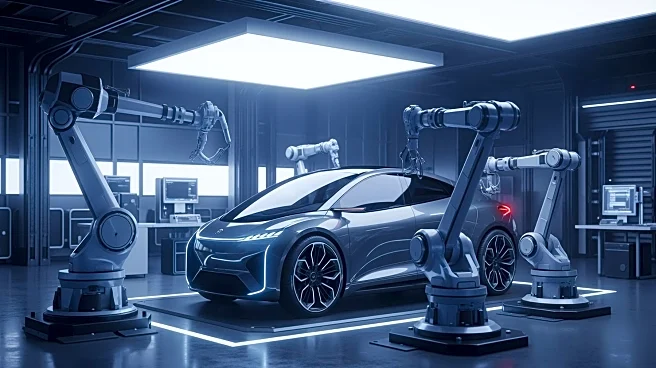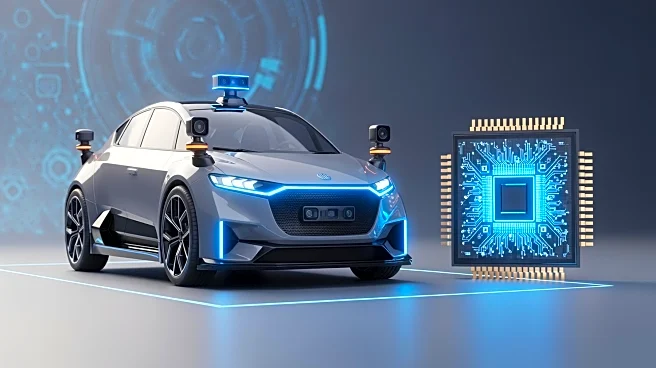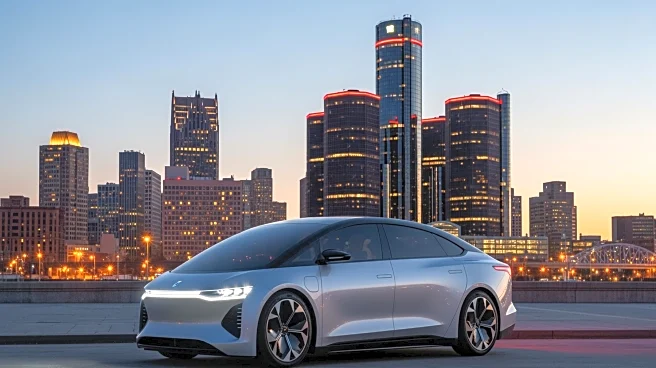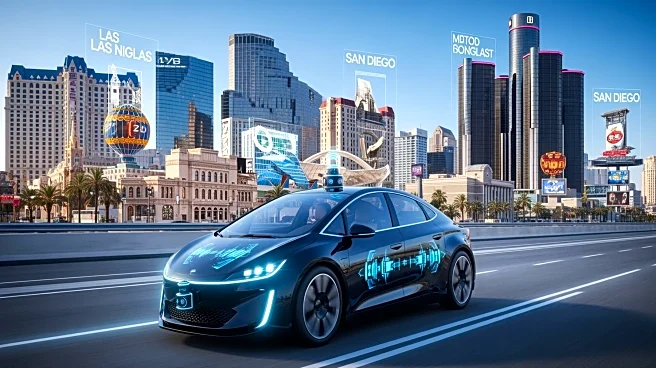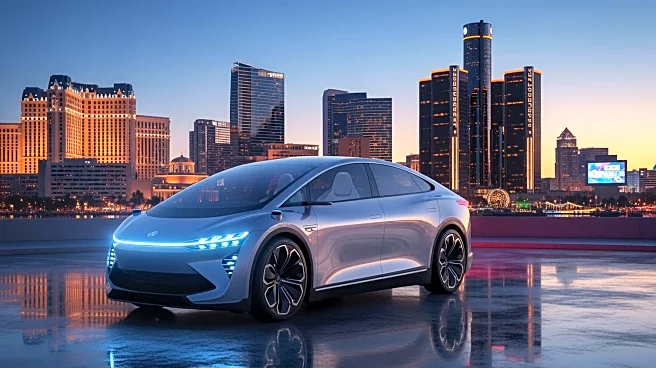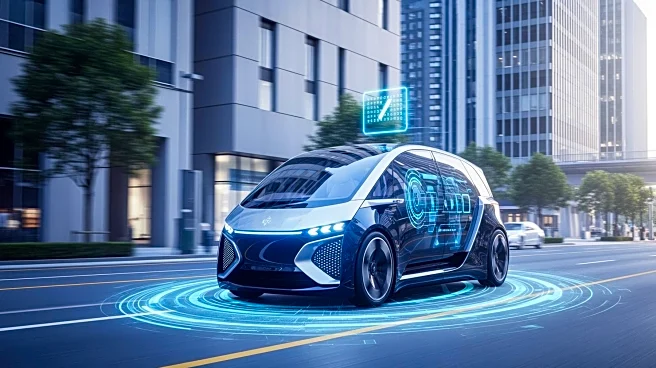What's Happening?
Stellantis has announced a strategic collaboration with Nvidia, Uber Technologies, and Foxconn to develop and deploy Level 4 autonomous vehicles for robotaxi services globally. This partnership aims to leverage
Stellantis' expertise in vehicle engineering, Nvidia's autonomous driving software, Foxconn's systems integration capabilities, and Uber's ride-hailing operations. The initiative is part of Stellantis' broader strategy to become a leader in autonomous mobility, following a recent agreement with Pony.ai to test autonomous vehicles in Europe. The collaboration will focus on Stellantis' AV-Ready platforms, incorporating Nvidia's DRIVE AGX Hyperion 10 architecture to enable Level 4 autonomy. Uber plans to deploy these autonomous vehicles in select cities, starting with 5,000 units in the United States, with production expected to begin in 2028.
Why It's Important?
This collaboration marks a significant step in the evolution of autonomous transportation, potentially transforming urban mobility by making it safer, more efficient, and sustainable. For Stellantis, this partnership enhances its position in the competitive autonomous vehicle market, while Nvidia and Foxconn benefit from expanding their technological influence in the automotive sector. Uber stands to gain by integrating advanced autonomous vehicles into its fleet, potentially reducing operational costs and increasing service efficiency. The deployment of Level 4 autonomous vehicles could lead to a shift in public transportation dynamics, offering more affordable and accessible options for consumers. This development also underscores the growing importance of strategic partnerships in advancing complex technologies like autonomous driving.
What's Next?
The partnership sets the stage for a series of pilot programs and testing phases over the next few years, with a focus on refining the technology and ensuring safety and reliability. As production is slated to begin in 2028, stakeholders will likely focus on regulatory approvals, infrastructure development, and public acceptance of autonomous vehicles. The collaboration may also prompt other automotive and tech companies to form similar alliances, accelerating the pace of innovation in the autonomous vehicle industry. Additionally, the success of this initiative could influence public policy and urban planning, as cities adapt to the integration of autonomous transportation solutions.
Beyond the Headlines
The deployment of Level 4 autonomous vehicles raises important ethical and legal questions, such as liability in the event of accidents and the impact on employment in the transportation sector. As these vehicles become more prevalent, there will be a need for updated regulations and standards to ensure safety and public trust. Furthermore, the shift towards autonomous mobility could lead to significant changes in urban infrastructure, with potential reductions in traffic congestion and emissions. The collaboration also highlights the role of AI and advanced computing in shaping the future of transportation, emphasizing the need for continued innovation and investment in these technologies.
